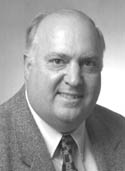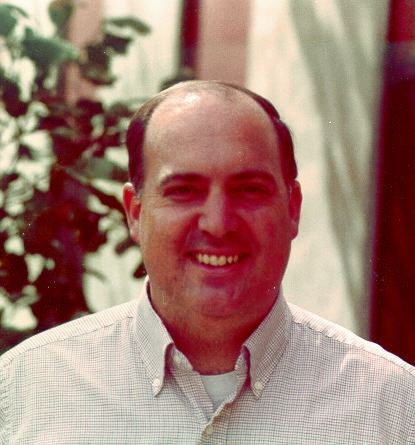Publications of Glen R. Cass
Air Pollution Expert Dies
Distinguished atmospheric scientist, Glen R. Cass, a professor of environmental engineering and mechanical engineering at the California Institute of Technology, died of cancer July 30, 2001 at Duke University Hospital in North Carolina. He was 54.
Cass, who received his Ph.D. from Caltech in 1978, taught at the Institute for 24 years. In January 2000 he joined the faculty of the Georgia Institute of Technology as chair of the earth and atmospheric sciences department. He maintained a joint appointment with Caltech.
Cass made a name for himself by painstakingly sleuthing out the myriad sources of air pollution that plague Los Angeles, beginning in the 1980s. Cass and his group ultimately generated a comprehensive database of source-emitted and ambient aerosol particles "that is without peer," says John Seinfeld, who holds the Louis E. Nohl Professor chair at Caltech's chemical engineering department. Christine Sloan remembers Cass making measurements everywhere possible, even inside fast food restaurants. "He knew the difference between whether the food was fried or grilled, and even what kind of oil they used," she says.
The long series of papers that resulted from this ongoing study "constitutes the definitive body of work on the chemical composition of organic aerosols," Seinfeld says. "His analytical chemistry was so meticulous that Glen was able to find traces of nicotine and cholesterol in atmospheric particles, markers for cigarette smoking and meat cooking in the ambient atmosphere. This body of work is of inestimable importance to air pollution research."
Glen Cass's research group has taken airborne
particle measurements in many parts of the world, including India,
the Maldive Islands, Cyprus, Poland, and parts of mainland
China. Five sites in Beijing, China were
monitored for "Operation Blue Sky," which identified
pollution sources in Beijing, and whose results
factored into China's 2008 Olympic bid.
He also initiated a
global ozone study at 400 sites around the world in
1999, which continues today.
A prolific scientist with more than 200 published articles, conference
proceedings, book chapters, and technical reports to his credit,
Cass's research focused on air pollution, with a particular emphasis
on the control of airborne particles, photochemical oxidants, and
improved visibility. He was instrumental in identifying the complex
mix of airborne chemicals that pollute urban areas like Los Angeles
and the Northeastern United States. Of special concern were very fine
particles that can be inhaled and stay in the lungs, and that
contribute to haze and poor visibility. He once described haze
as a "problem of worldwide note and local disgust."
Cass was equally interested in the protection of museum collections
and archaeological sites from damage due to air pollution. He
and colleagues modeled air quality both within and just outside
several museums throughout Southern California, which was useful in
evaluating the effectiveness of various measures to protect works of
art.
He did extensive research projects for the Getty Conservation
Institute, including studies to determine which artists' colorants are
subject to fading by gaseous pollutants like ozone, as well as many
studies to determine air pollutant intrusion into museums and other
facilities that house artwork, such as the new Getty Center in Los
Angeles.
In China, he helped design computer-based models that simulated the
air flow into the Yungang Grottoes, a collection of man-made cave
temples dating from the 5th century A.D. that hold more than 50,000
stone carvings. The grottoes are situated in the middle of one of
China's largest coal-mining regions. Cass's work contributed to the
design of particle filtration systems and appropriate ventilation
rates for reducing air pollution within the grottoes.
 And in Poland, that country's monarchs had for centuries enhanced
their wealth by trading in salt extracted from the huge Wieliczka
mine. Over centuries mine workers were encouraged to decorate the
mine's interior. The resulting freestanding statues, bas-relief
carvings, and immense chandeliers - all carved from salt - have
gained worldwide artistic and cultural renown. In the last century,
however, the earliest and some of the most valuable of the carvings
have melted into featureless blobs, thanks to pollution. Cass's work
contributed to the finding that lowering the relative humidity in the
mine would protect the salt from further deterioration.
And in Poland, that country's monarchs had for centuries enhanced
their wealth by trading in salt extracted from the huge Wieliczka
mine. Over centuries mine workers were encouraged to decorate the
mine's interior. The resulting freestanding statues, bas-relief
carvings, and immense chandeliers - all carved from salt - have
gained worldwide artistic and cultural renown. In the last century,
however, the earliest and some of the most valuable of the carvings
have melted into featureless blobs, thanks to pollution. Cass's work
contributed to the finding that lowering the relative humidity in the
mine would protect the salt from further deterioration.

